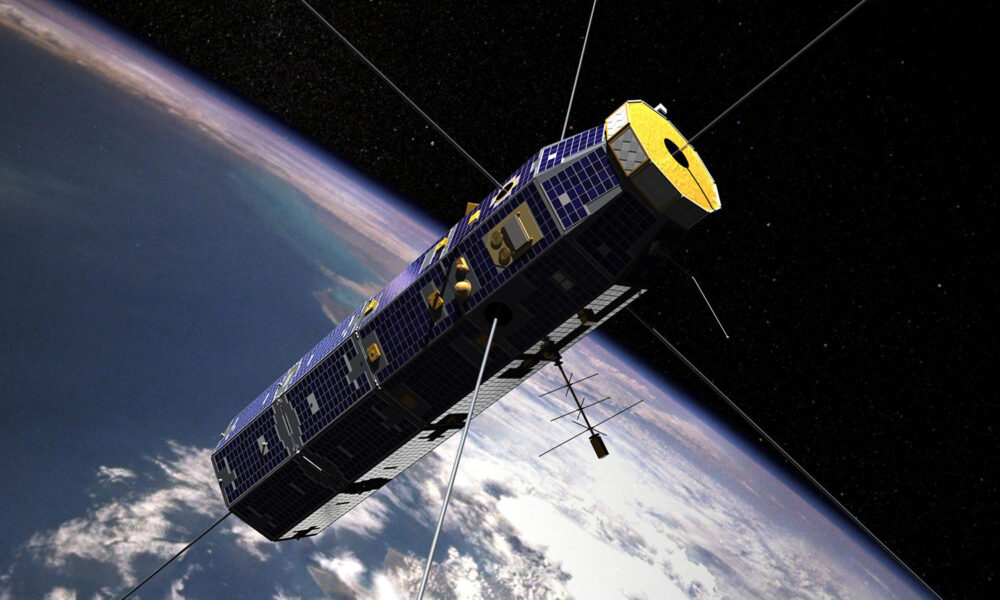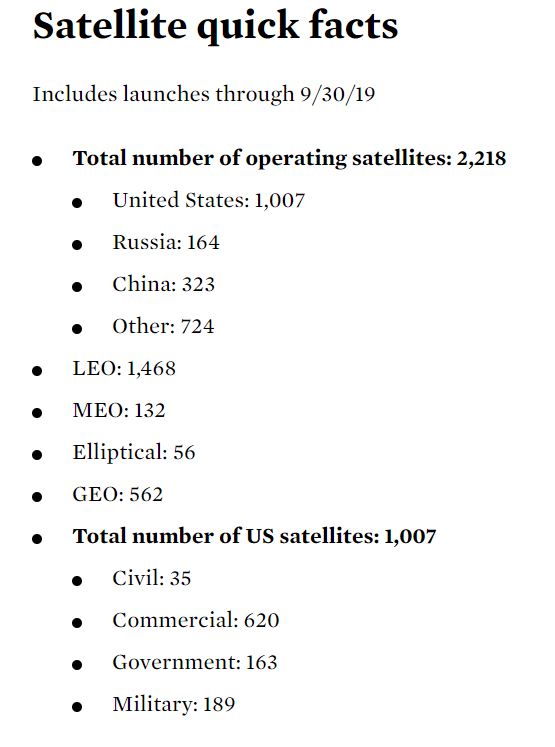We have updated the UCS Satellite Database, including launches through September 30, 2019. Lots of movement this time, with 209 satellites added and 53 removed for a total of 2,218 actively working satellites.
Much of the growth is being driven by the deployment of large commercial satellite systems.
Twelve Lemur small (3U) satellites were launched to low-earth orbit for the Spire Global constellation designed to collect and analyze maritime, weather, and aviation global datasets. Lemur satellites have fun names; welcome to space Beaudacious and LillyJo! Spire Global’s is one of the largest commercial constellations, with 85 active satellites.
Twenty more Dove small sats are now operating in low-earth orbit, part of Planet Labs’ earth-observing constellation of 234 satellites, including the larger SkySats. Planet’s constellation is currently the largest commercial satellite constellation. (By number, but not by total mass. Doves are 3 kg, and SkySats are 90 kg.)
China is also entering the commercial remote sensing market, and launched five hyperspectral, high-resolution Zhuhai satellites, each about the same size as SkySats. These which will comprise part of a planned constellation of 34 commercial satellites. Currently, twelve are in use. According to Xinhua News, the Zhuhai constellation will include video, hyperspectral, and high-resolution optical satellites, as well as radar and infrared satellites.
Much of the future growth is likely to be not in remote sensing but in satellite-based broadband internet. SpaceX’s first 57 Starlink (nonprototype) satellites came online in the period covered by the database. (Another set of satellites were launched in November just after our cutoff and so will be included in the next update.)
SpaceX CEO Elon Musk estimates the constellation needs 1000 active satellites to be economically viable, but its current plans call for 12,000 satellites, more than five times the number of all currently operating satellites. In October, SpaceX submitted plans for an additional 30,000 satellites, a move criticized as trying to get around normal procedure by jamming the ITU up with studies. (The International Telecommunication Union is the international body that coordinates the broadcast of radio signals from space.) With a launch mass of 227 kg, Starlink satellites are relatively large, and the size, orbit, and the sheer number of them make them readily visible. The May and November launches have dismayed astronomers who have to remove the satellite reflections or emissions from their datasets. SpaceX has pledged to paint the bodies of future Starlink satellites black to limit their optical reflectivity, though they won’t be painting their solar panels.
The approach of O3b Network, now owned by SES, is to use fewer satellites at higher altitudes to provide low-latency internet to those currently underserved (the Other Three Billion). Four relatively large (700 kg launch mass) O3b satellites were launched to medium earth orbit as part of its constellation of twenty (including spares.) Satellite-based global broadband internet is a competitive field and a number of other systems are under development. The first six test satellites for the planned 650 satellite OneWeb constellation were launched in February 2019.
This is mostly all good news—commercially-provided satellite services can help make people’s lives safer and healthier. But it’s not at all clear current systems are prepared to deal with rapidly increasing space traffic. The Trump administration’s Space Policy Directive-3 mandates shifting some of the burden of civil space tracking from the Department of Defense to the Department of Commerce, but Congress declined to fund that transfer this year, in part because the Commerce officials refused to testify about the budget request.
The featured image in this blog is courtesy of NASA.


